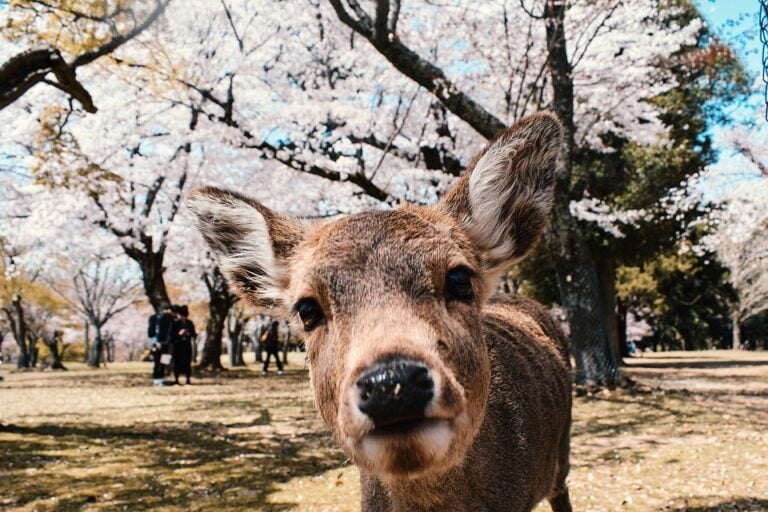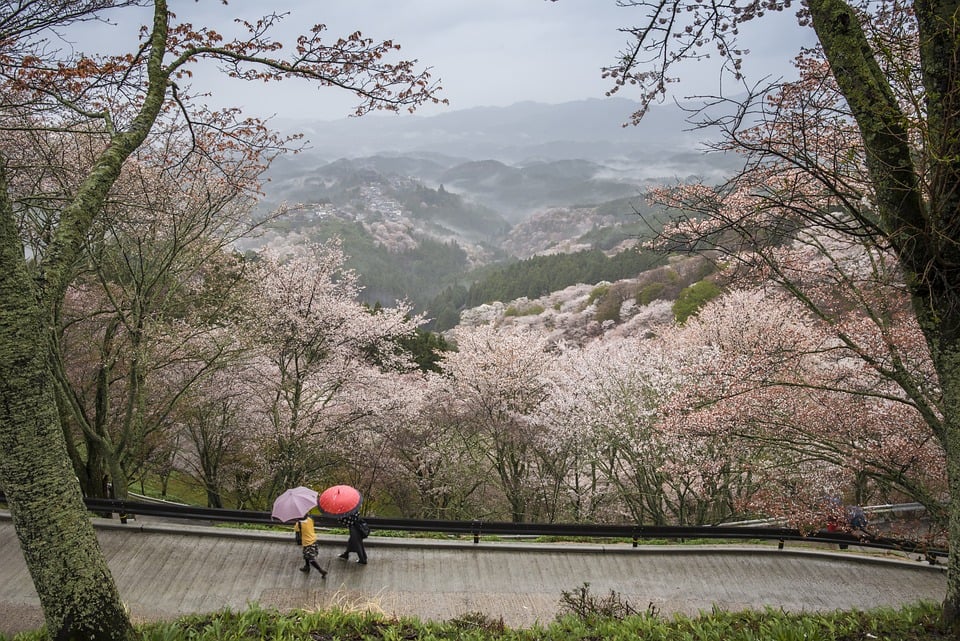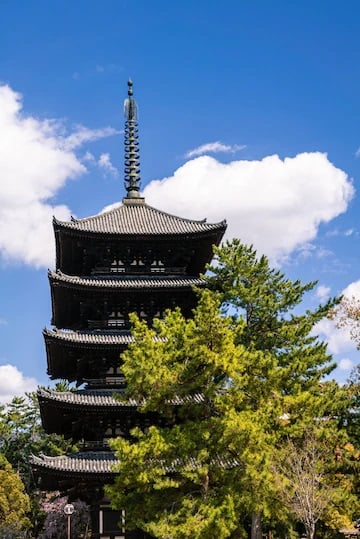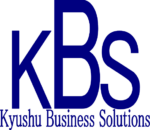
So you’re planning a trip to Kansai or maybe you want to come to Japan and don’t know where to go. I’m sure you’ve heard a lot about Kyoto and all the beautiful things to see. Perhaps you are excited to try Takoyaki in Osaka or travel down to Kobe to eat some seafood. Kansai has so much to offer from historical cities like Kyoto and Nara to modern life in Osaka, but you may be under the impression Nara is nothing but the city of deer. While our lovely little “shika” friends are wonderful to meet, here are some more things in Nara to do while you’re in the area.

After living in Nara for a while, I learned that the city is a wonderful experience no matter what time of year you come! In this article I’d like to go over a variety of spots (both well-known and not) you can visit as well as tell you about some of the festivals that Nara hosts that you can attend!
Popular Sights in Nara
Todaiji (東大寺)

Todaiji is the most famous temple in Nara seated in the heart of the Nara Park. Here you can see the Great Buddha in Daibutsuden, a massive bronze statue first casted in 749 AD. Of course the Great Buddha is a must see as it is one of the largest statues of Buddha in Japan and a major symbol of Nara, but there are a variety of beautiful gardens and water features such as ponds, bridges, and pagodas worth seeing around Todaiji.
Perhaps my personal favorite part of Todaiji is a pavilion called Nigatsudo. As you approach Daibutsuden, to your right there is a little trail that goes up the mountain side and atop that trail is a small building that overlooks all of Nara. It has a beautiful view any time of year and is well worth the hike up the mountain side. As the sun sets and the laterns are lit, Nigatsudo makes for a breath taking view.

Kofukuji (興福寺)

Kofukuji is very easy to get to being situated very close to the Kintetsu Nara Station. Kofukuji, along with Todaiji, is one of the Seven Great Temples of Nara. The complex was founded in AD 669 and stands at 50 meters tall as the second highest pagoda in Japan with a variety of historically significant statues worth seeing.
Kasugataisha (春日大社)

Perhaps my favorite shrine in all of Japan, Kasugataisha is in the middle of Nara Park within walking distance of Todaiji. This shrine was first founded during the eighth century by Fujiwara Nagate and is famous for the hundreds of stone and bronze lanterns all throughout the forest that surrounds it. This shrine is dedicated to deer (hence all the deer in Nara) and is filled in every corner with the fluffy little friends.
No matter what time of year or what weather you visit Kasugataisha in, there is something magical about the beautiful natural setting of this shrine and the many rare birds, trees, and wildlife you will see throughout your walk.
Horyuji (法隆寺)
Horyuji is the oldest completely preserved temple complex in Japan, first built in the Asuka period (552-645 AD). It contains a large variety of art from throughout Japanese history and is one of the Major National Treasures of Japan. The Great South Gate (Nandaimon) and the path to the Middle Gate (Chumon) are two must see parts of the entire temple complex, both dating from 711 AD. In addition, be sure to see the Main Hall (Kondo) which is said to be the oldest surviving wooden building in the world.
Nara Machi (奈良町)

Naramachi was once the temple grounds of the Gangoji (a major temple during the Nara period), but then became a major merchant district around the 15th century. This is a wonderful place to visit if you wish to see a variety of locally run shops ran by local artists and eat at restaurants where you can try the famous pickled foods of Nara as well as traditional Japanese cuisine. Additionally, there are a variety of guests houses where you can stay overnight for a unique experience of traditional Japanese style.
While in Naramachi, you can try unagi (eel) as well as sashimi and other Japanese dishes at Edogawa Naramachi. Additionally, there are wonderful izakaya (Japanese-style dining pubs) such as Kura or Shika Maru where you can try a variety of Japanese foods and sake. My favorite place to visit is a small café called Rokan Room where you can try Nara style somen while sitting in beautiful rooms the café offers such as a renovated bomb shelter beneath the café, the loft with a cozy kotatsu (Japanese heated table) in the winter, or the rooftop with a grand view of Kofukuji in the summer.
Restaurants in Naramachi:
Less Well Known Spots
Isuien Garden
This is a small yet beautiful garden famous for its art museum opened in 1969. With beautiful Japanese Shakkei style landscape, you can enjoy these gardens along side to the wonderful teahouses that surround the gardens. The best time is to see them in the spring and summer, but seeing the autumn leaves is also well worth it.
Wakakusa Yama (若草山)
Wakakusa Yama is a wonderful spot if you love hiking. Nara is one of the most picturesque cities in Japan, so to be able to hike up and see it from afar is well worth the view, especially during spring when the mountains are covered in cherry blossoms. Even for beginner hikers, Wakakusa Yama is an easy trail to follow giving you something to during good weather.
In addition to Wakakusa Yama, you can hike up to the Uguisuzuka Burial Mound (鶯塚古墳). This is a large keyhole-shaped grave known as Kofun. These ancient burial mounds are scattered all over Nara and Osaka prefectures and date back to the Kofun Period (250-538 AD). This burial mound is not particularly well known but is a very interesting part of Japanese history and culture.

Ukimido

In the middle of Nara Park sits a small hexagonal wooden pavilion across the Sagiike pond. This spot is a wonderful place to rest for a bit as it tends to be tucked away from the main bustle and tourism that fills other more famous spots like Todaiji or Kasugataisha. It is safe to say Ukimido is my favorite spot to go in Nara. Between the peaceful little boats you can ride through the day or the magnificent view of the stars at night, Ukimido carries a peaceful energy I love. Additionally, in early August during the Nara Tokae latern festival, the pavilion is always lit making it feel entirely otherworldly.
Nara Festivals
In addition to the wonderful cites to see in Nara, there are many festivals making Nara a wonderful place to visit regardless of what time of year you come. Below is a calendar of a few of the festivals you can attend while you plan your trip.
January
Yamayaki (Mountain Burning Festival)

On the fourth Saturday of January or the following day if the weather is bad is Nara’s biggest and most unique festival. At 5:30 pm on this day, massive fires are lit in the middle of Wakakusa-yama and the mountains on the east side of Nara. At 6 pm the fireworks are held then at 6:15 the fires on the dry grass on the hillside are lit. It may sound crazy, but the festival is actually quite fun. You can enjoy a fun matsuri throughout Nara Park and end your day with massive fires!
February
On February 3, at 6:30 pm, Kasugataisha is illuminated (of course with fire) with 3,000 lanterns for the Setsubun Lantern Festival that has ran annually for the past 800 years. It also occurs again in August 14-15 if you don’t want to travel to Japan in the middle of winter. Perhaps the most romantic festival in Nara, it is a wonderful time to go for a stroll through Nara Park.
March
Omizutori (Water-Drawing Ceremony)

At this point between burning the mountain and lighting lanterns you’ve noticed Nara really likes fire. Well, to follow this theme, the Omizutori is another fire festival (despite it’s watery name). In the evenings of 1-14 of March, you can go to Todaiji’s Nigatsudo to see the monks carrying large flaming torches across the hall, raining the embers down on the crowds (I promise you it’s safe).
May
Taikigi Ono (Firelight Noh)
Here is a festival at Kofukuji on the third Friday and Saturday of May. A traditional Japanese musical drama known as Noh is performed and the tickets can be bought at the tourist information centers in town.
June
Nyaramachi Neko Art Festival
For all you cat lovers, there is also a festival for you! In June throughout Naramachi you can see cats celebrated with an abundance of local artwork featuring cats from pottery to kitty-themed accessories. This festival is nicknamed “nyaramachi” using the word “nya” which is the Japanese onomatopoeia for a cat’s meow.
October
Shika-no-Tsunokiri (Deer Antler Cutting Ceremony)

Of course, this being Nara, there is naturally a deer related festival as well. Held in the Rokuen deer enclosure near Kasugataisha on Sundays and holidays of October, the locals blow a horn to summon the deer and remove their horns. This is a fun festival to attend as it is very unique to Nara city.













